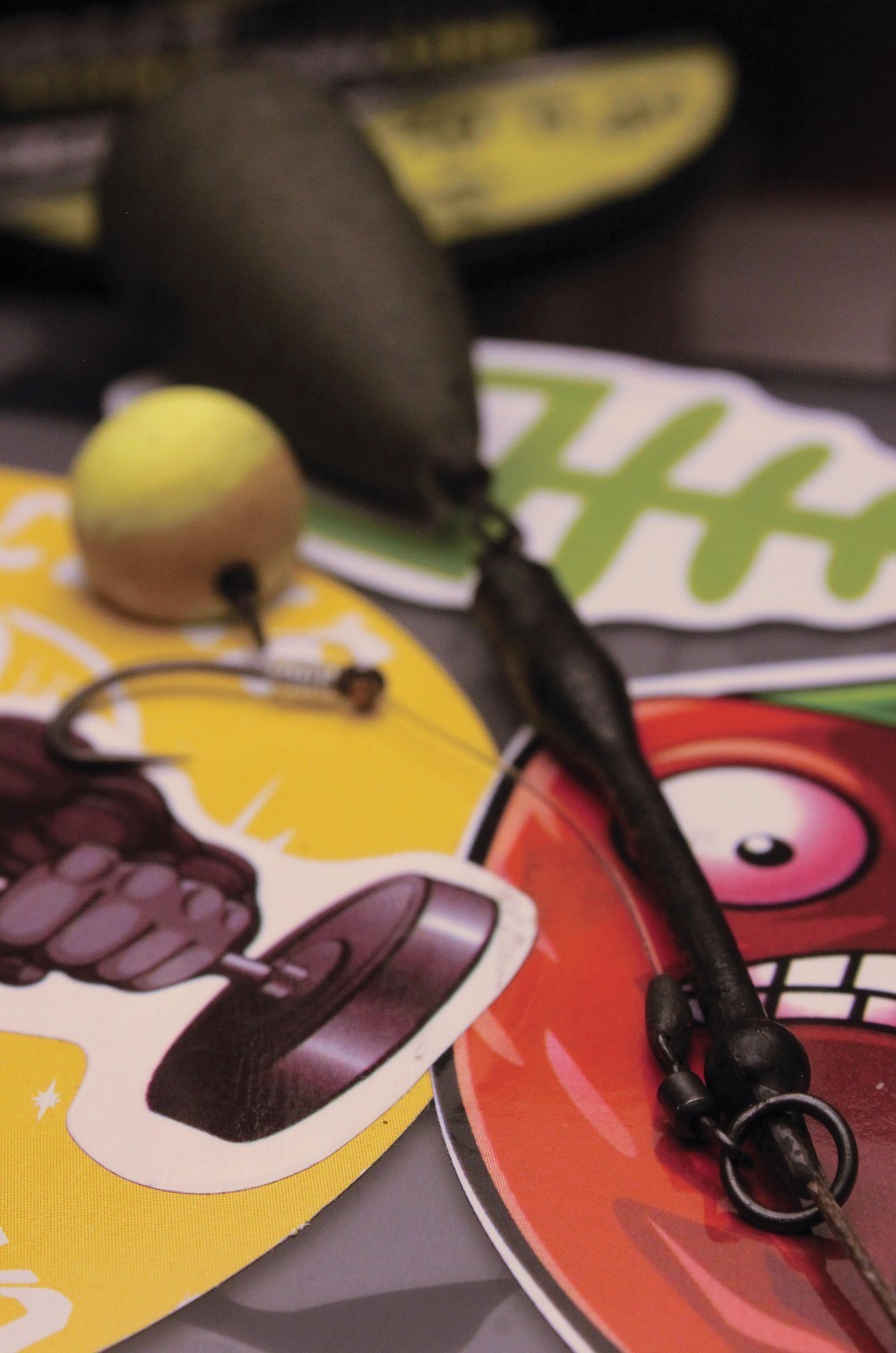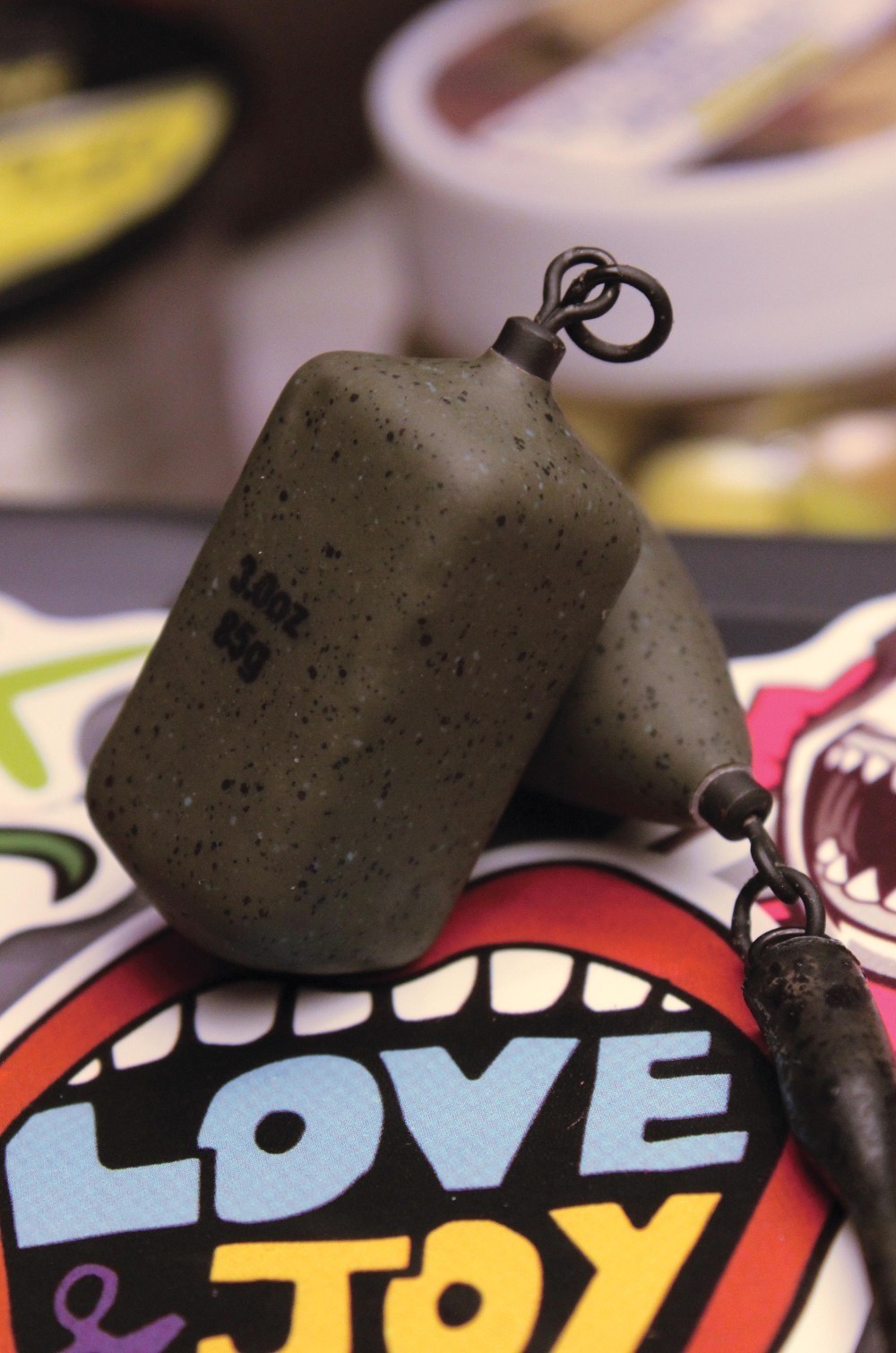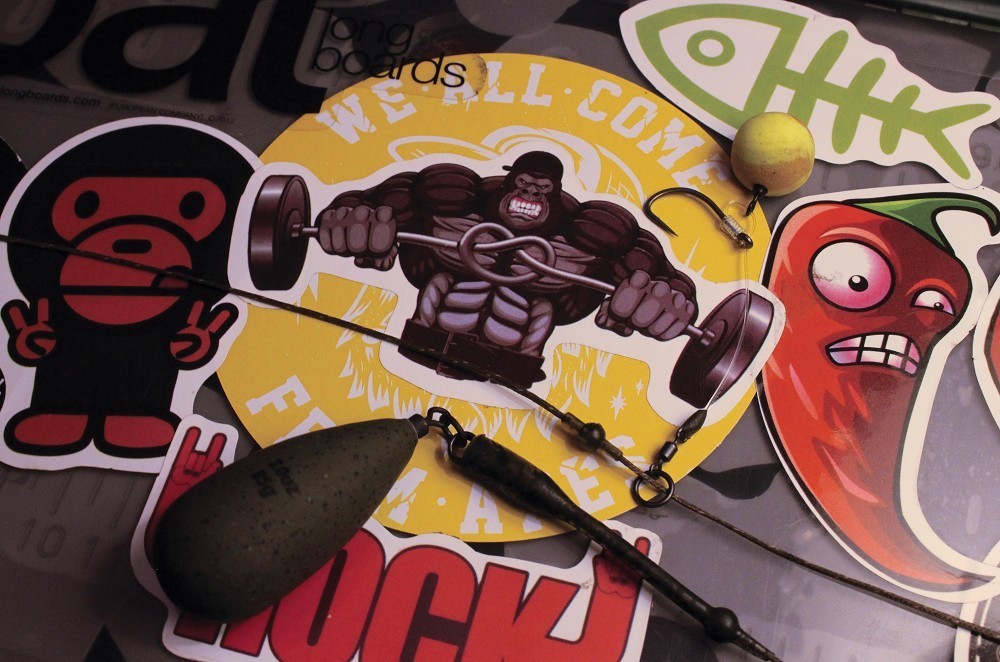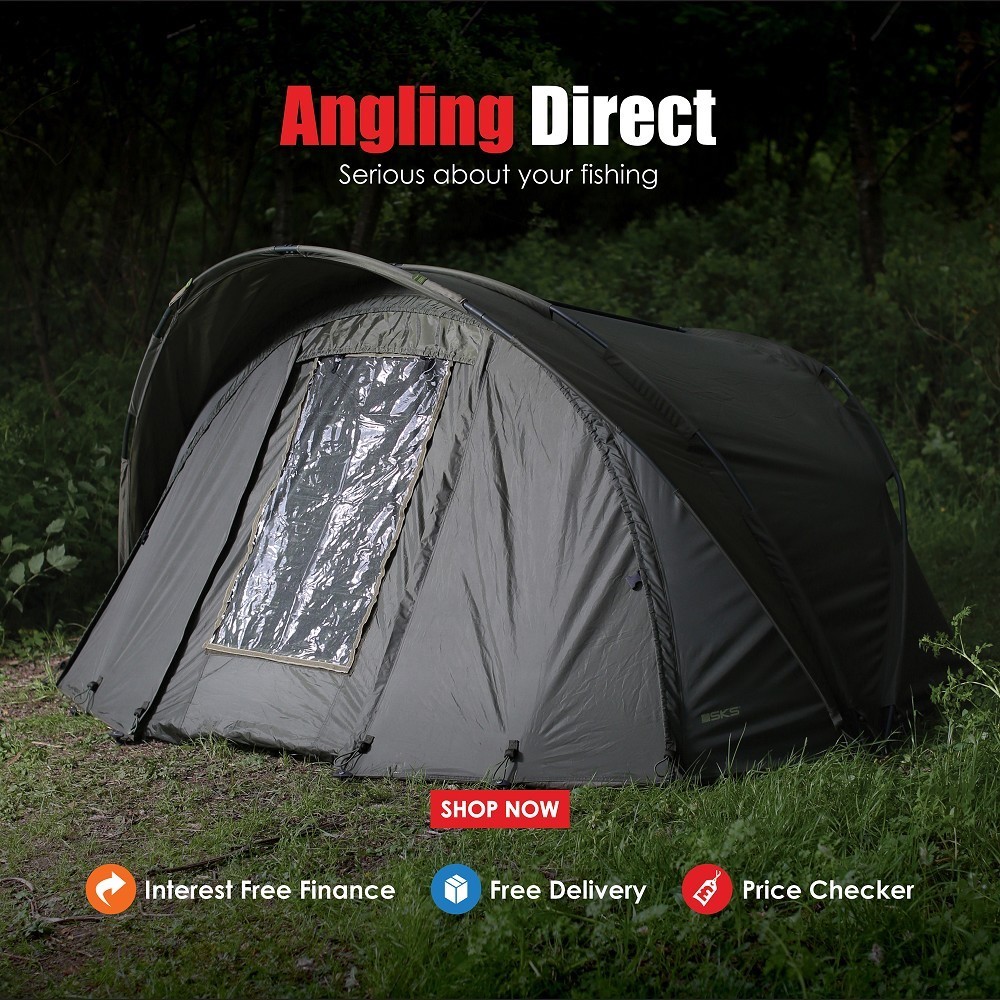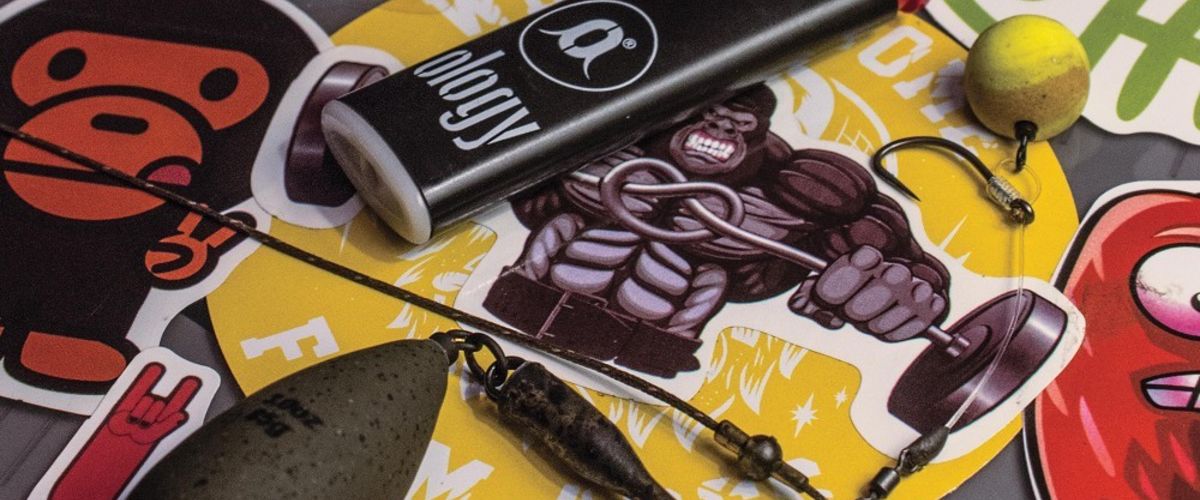
Weighing up the odds
Mat Woods takes a look at lead arrangements and how choosing the right lead set-up can make all the difference...
There’s never been a better time to chuck a Choddy out. Why? Because the bloke next to you is probably so busy messing around looking for the ultimate winter set-up that he’s forgotten about them. I’ve been fishing a few day ticket lakes recently and all I saw were little Ronnie Rigs, the Danny Fairbrass ‘D rig’ or Mag-Aligners.
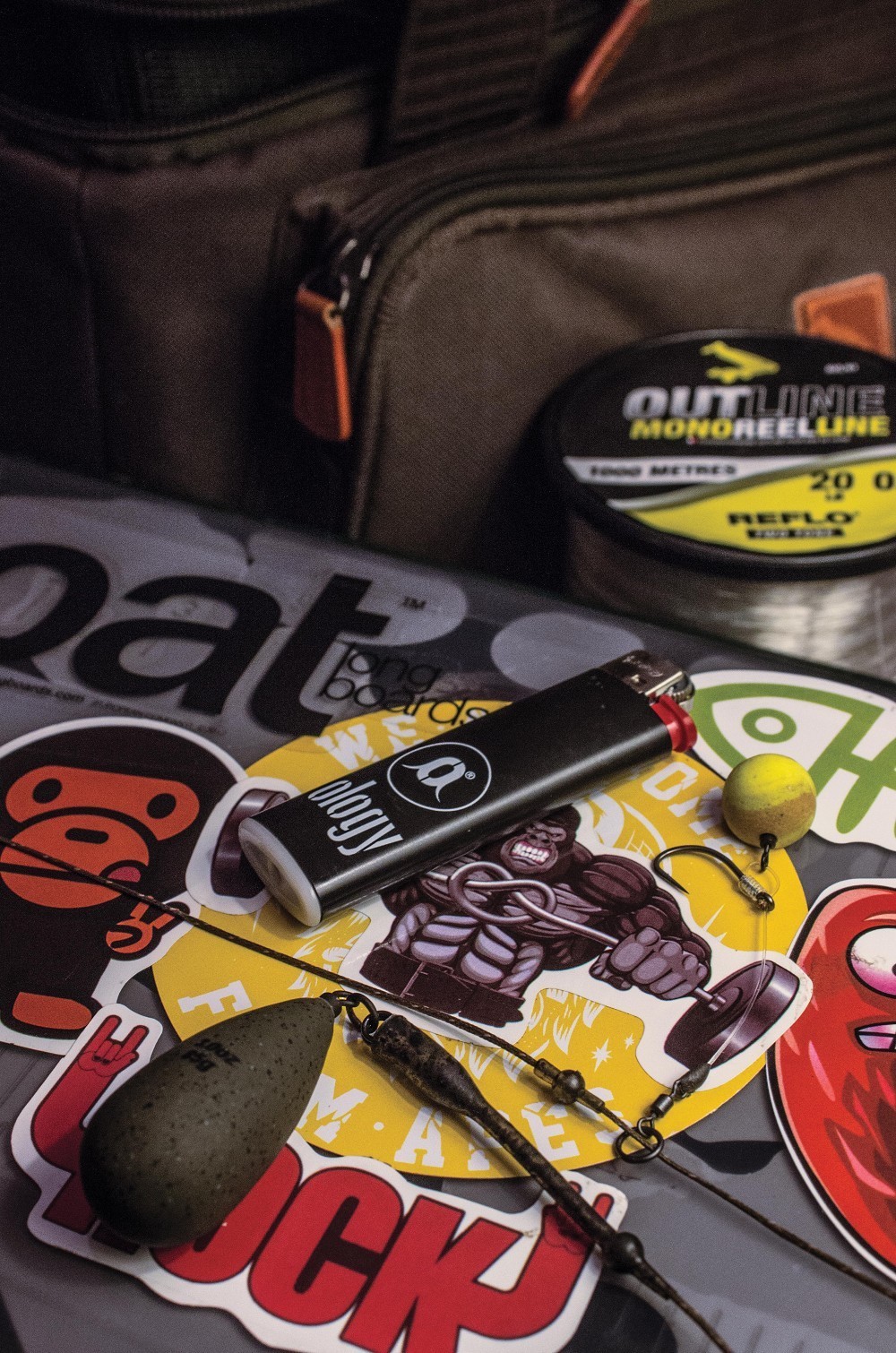 The Running Chod: in my opinion, it’s best used with the longest length of leadcore, or Pindown, as you can cast out
The Running Chod: in my opinion, it’s best used with the longest length of leadcore, or Pindown, as you can cast outI’ve often found in winter that carp are actually less inclined to shy away from a crude rig. They’re moving around extremely slowly and it’s more important that your rig is both presented well and working efficiently. If anything, the mechanics of your rig and your lead set-up are more important now than ever.
Carp go into a relatively torpid state during the colder months and become extremely inactive at times. For that reason, it’s important your lead set-up is working in your favour, rather than against you.
Chods, as a general rule, are a great ‘go-anywhere’ set-up, that can be roved around a swim easily, presenting your bait virtually everywhere it lands. But Chods can be set-up in lots of ways, and the one I want to kick off this Weighing Up The Odds series is with what’s usually called ‘The Running Chod’. This is when the bottom bead is right next to the lead, whilst the top bead is set up to 6ft up the line, so the Chod has lots and lots of lateral travel up and down your main line.
The benefits of this are plentiful. Firstly, your rig will find its own natural resting place, providing a natural presentation on the lakebed. Secondly, the rig has a lot of lateral movement on the lakebed, which means fish can feed around it with less suspicion than if the rig was tethered or semi-fixed, as it were, in one position.
Most people worry about this set-up not setting the hook correctly, as the rig has to travel to the nearest bead before the bolt effect occurs, with the fish feeling the weight of the lead. But that’s not necessarily the case.
In my opinion, the Running Chod is best used with the longest length of leadcore, or Pindown, as you can cast out. This way, the fish has to lift the full weight of the leader, and they get absolutely nailed! It was anglers like Lee Collings and Roy Russell who I first saw using these massive long leaders, but their results were superb, at all periods of the year.
When I fished with this presentation, I caught consistently from a very low stock water in north Shropshire, and continued to catch in the winter using it, too. Despite its agricultural appearance, it definitely seems to trick them.
But there are a few things you need to bear in mind when using the Running Chod, which are important. Something you must bear in mind is what happens to the rig when it hits the surface. If the pop-up is not buoyant enough, sometimes the rig will stay down by the lead. For that reason, I would only ever use the Running Chod with a mega buoyant bait, like a Sonubaits Super Chod, corkball pop-up or High Lite. This way, you can guarantee that the rig will ride up the leader.
You also need to consider what happens when you hit the line clip on a cast, as sometimes the rig will ride up to the top bead during flight, only to end up back down by the lead when you hit the clip. There should be some separation when the rig hits the water, but it’s not guaranteed. I find that by hitting the clip with the rod high above my head, rather than down to the side, you get around this problem.
Something else you need to pay attention to is making sure the leader stays pinned to the lakebed. In a big wind or undertow, it can easily lift up, and no matter how much line you pay out, the line will still be picked up by the tow. In this instance, I would be happier changing to an Outline fluorocarbon leader and using a lead clip.
One other element that plays a part with the Running Chod is the componentry used. It’s got to be safe, so make sure the top bead can eject from the stopper used to semi-fix it in position. I’ve been using some prototype stoppers that are a soft rubber, so can be moved up and down the leader really easily. They’re tapered, too, so the soft bead I use over the top can eject if necessary, but it’s not so loose it comes off on the cast.
At the bottom of the rig, I’m a firm believer in keeping some separation between the Chod Rig and the lead. Not only to avoid tangles on the case, but also to provide a buffer when playing the fish. I’ve found I land every carp I hook on a Chod Rig, so long as that buffer is at the end. It may be making no difference whatsoever, but it gives me great confidence. I started using it on The Abyss many moons ago, when we started using the shortest, smallest Chods we could possibly tie as the carp would eat 10mm boilies a lot more readily than they would 15s and 18s. The big lump of silicone we used back then did the job, but there are more refined options today, which I would encourage you to use.
The lead itself? Well, there are two I’d use myself: either a pear style shape that provides a lot of feedback when feeling for a drop, or a flat-sided lead when fishing on or around features. I’m not scared to use a large lead with a Chod Rig, either. Indeed, I’ve found it a lot better on some venues. If you need to drop the lead, either tie it on or use the Korda Heli-Safe, which works really well I’ve found, so long as you keep the inside of it clean. Any bit of grit inside the mechanism seems to lock it open, but it can be blown out easily enough.
So if you’re off out this weekend and your head is fried with winter rig ideas – don’t forget how many carp you and everyone else has caught on a Chod Rig over the years. Put your best hookbaits on the end and enjoy!





